1). What initially prompted you to get involved with local government?
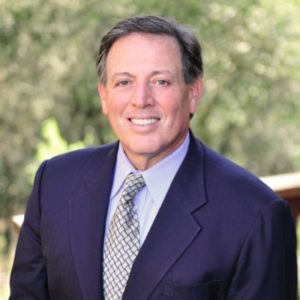 Honestly, I cannot remember a time when I didn’t want to be involved with local government.
Honestly, I cannot remember a time when I didn’t want to be involved with local government.
My parents immigrated to the US when my mom was pregnant with me. They settled in a Brooklyn neighborhood that had been and, at that time (late 1950s) still was, the preferred landing spot for people from my dad’s village in the deep South of Italy. Most of these folks were illiterate in Italian, let alone English. My dad could read and write in Italian and could speak and read basic English. Most importantly, he was fearless and a truly caring person. He quickly became a leader among his peers and whenever they had trouble with a bureaucracy—the electric company, the phone company, whatever – my dad would call one of the local elected officials and badger them into helping the family that was in need of assistance. As a result, my father became a kind of precinct captain who could deliver votes on election day.
By the time I was 10 or so, my dad, who never completely mastered written English, was regularly enlisting me to read documents, utility bills, eviction notices, and call or visit the local electeds to lobby them for assistance. I know it sounds almost too quaint to be true, but my father never took a dime from anyone for his help—however, he did sometimes get bags of homegrown tomatoes and a variety of other vegetables that our neighbors grew in the backyards behind their tenement apartments.
I think that, by the time I was a teenager, the die was cast: I didn’t want to be my dad; I wanted to be the person on the other side of the telephone call. The person who could, through their position of power and authority, solve the problems facing people who didn’t have the ability or social position to be heard. From what I saw, elected officials and high-ranking people in local government were charged with the duty and were empowered to help the helpless. They made a difference in the lives of real people and they were respected for that. I still believe this. It’s at the core of who I still aspire to be: someone who helps people the way my father tried to help people.
2). Why did you want to become a City Manager?
When I began my political career 32 years ago in Oakland, being a City Manager wasn’t anything I had ever thought of. Of course, I understood the City Manager form of government, but I had grown up on the East Coast where City Managers don’t really exist. The Mayor is the Chief Executive of an East Coast city; the Mayor is in charge.
Like many local elected officials, I started my public service as a member of a city commission (Environmental Affairs Commission) and president of a non-profit organization (Friends of Oakland Parks and Recreation). I served nearly 6 years on the Oakland City Council, where I was focused on budgetary prudence and government transparency. During that period there had been not one, but two “strong mayor” ballot measures. The first one failed, but the second one – which was put on the ballot and strongly supported by Jerry Brown—won overwhelmingly. I supported both of those ballot measures which, I realize, is somewhat ironic given the path my public service career eventually took.
Mayor Jerry Brown’s strong mayor initiative included a provision that made the City Attorney an independently elected officer. I had begun my legal career as a Legal Services attorney in some of the toughest parts of St. Louis, Missouri and its surrounding communities. Because of that experience, I believed that a City Attorney in Oakland could do a lot of good, especially in many of the economically challenged neighborhoods that had suffered the impacts of redlining in banking, zip code profiling in the area of auto insurance, and other instances of institutional racism. I ran for that job and won, becoming Oakland’s first elected City Attorney. I served in that role for more than 11 years, and I loved it.
In those 17 years as a city councilmember and city attorney, I often thought about running for mayor of Oakland because I felt I could do a good job running the city. Thinking about “running a city” was not new: my roommates in college used to tease me about becoming Mayor of my hometown of New York. But the timing in Oakland never worked for me to make that race. Whenever the mayoral election season rolled around, it was either not the right time politically, or not the right time for my family.
By late 2010/early 2011, I was dealing with a new mayor in Oakland who was extremely hostile to me both personally and politically. She paid no heed to the city’s charter or state or federal law when those conflicted with the things she wanted. As I said at that time, “it’s very hard to be the ‘Rules Guy’ when the people you are working with don’t respect the Rules.”
Having been in office in the East Bay for so many years, and because of my involvement with the League of California Cities, I had developed many relationships and alliances with elected officials in other cities while working on regional and state issues. Alameda was one such city and it bordered along much of Oakland’s waterfront. The new mayor there, Marie Gilmore, was not only an ally but someone with whom I had developed a friendship. Mayor Gilmore was smart, dedicated to public service, and Alameda’s first African American mayor. Alameda had tried and failed twice with poorly conceived initiatives to redevelop their decommissioned military base, the Alameda Naval Air Station.
When Mayor Gilmore and I spoke about the problems she was having in Alameda and I was having in Oakland, she asked whether I might be interested in becoming Alameda’s City Attorney. I responded, half-jokingly, that I would be more interested in becoming Alameda’s next City Manager. When the job became available, I applied. When even the “citizens’ interview” panel strongly recommended me, it became clear that Alameda would be my first opportunity to try my hand at city management. I am so grateful to have had the opportunity.
3). What was the most important part about your job as a city manager?
Hiring and developing a great team of colleagues. No question: this is the key to a successful tenure. You are only as good as the people you work with, and I have had the immense good fortune to work with some fantastic public servants who are not only great analysts and leaders, but deeply ethical and decent people. I could literally write a book about the awesome quality of many of my colleagues over the years, not just in my work as City Manager but as City Attorney and as a City Councilmember.
Just to take two examples: I was so very fortunate to have worked for 20 years — across 4 city positions in 3 different cities—with Alexander Nguyen. Alex is now the City Manager of Oxnard and he is one of the best. He is fearless and truly cares about individuals as well as making good policy. The other superstar I was blessed to work with in multiple cities was Marianna Marysheva. Marianna is brilliant, capable and extremely imaginative. She is especially talented at finances; I know of no one else working in California municipal government today who is as skilled at working to rationalize budgets. Like me, both Marianna and Alex are immigrants; accordingly, all three of us share the dedication to hard work and democratic values which is so precious for those of us who actually know and are grateful for how special America is.
I often muse publicly that it is amazing how, when my lips move, people hear the voices and keen analysis of my staff. My audiences think I am joking. I am not.
4). Which City project are you most proud of during your years as a City Manager?
That’s a very hard question. Across all my different municipal roles, not just city management, I am most proud of the Oakland Neighborhood Law Corps, which I conceived and created when I was Oakland City Attorney. The Law Corps combined the crusading passion of programs such as Legal Services for the poor and the Peace Corps with the great power that municipalities have over issues concerning the health, safety and welfare of city residents and businesses. And all of it was imbued with a true “bottom up” approach to case selection and management, with community residents, not City Hall bureaucrats, deciding which problems needed to be tackled in their neighborhood. Soon after it went into operation, the Law Corps won “Grand Prize” awards for innovation from both the National League of Cities and the League of California Cities.
Two years ago, I was asked to be at a reception honoring the 15th anniversary of the start of the Law Corps’ work. There were new young attorneys there who –just like their predecessors in 2002 — were excited by the work they were doing. The Neighborhood Law Corps is still making a real difference in the lives of people in Oakland’s more challenged neighborhoods: fighting slum conditions, environmental hazards, institutional racism and neglect, blight, and criminal nuisance.
I am sure that everyone with a long career in government service looks back from time to time and wonders whether they made the right career choice. Until that anniversary reception two years ago in Oakland, I was no exception. But that night, after seeing the continuing vibrancy and effectiveness of the Neighborhood Law Corps, I knew that my youthful decision to pursue public service as a career was the right decision for me. I have never doubted it since.
5.) What are the greatest challenges facing City Managers in California today?
There are tremendous financial challenges approaching California cities that we all know have been coming for years: the continued erosion of sales tax revenues, the pressure on utility tax revenues resulting from changes in telephone service and, of course, the pension crisis that will crowd out local service budgets for at least another 20 years or so.
The real, well-founded, and widespread outrage over how the criminal justice system differentiates among Americans based upon the race of the individual involved is not going to go away. City leaders will have to chart a course that acknowledges and at last corrects the racism and unconscious bias which persists in many public safety organizations while, at the same time, rejecting the naïve and utopian notion that a society in which respect for law and concern for the safety of others is eroding is a society that can afford to have no effective means to enforce law. Balancing these two aspects of the coming public safety reform will require City Managers to carefully tiptoe through a political and policy minefield. I can tell you from personal experience in Oakland that this is not so easy to do.
However, the COVID 19 pandemic has both introduced and accelerated some existing societal trends in ways that will present some cities with new problems and others with new opportunities.
One of these goes to the heart of how people view working in offices. The growth of telecommuting and work schedule flexibility was viewed with suspicion by a large number of government and business leaders – nearly always Baby Boomers – who were doubtful that employees would actually work as effectively at home as at the office. The pandemic has proven to most of these decision makers that management and professional employees, in most fields relevant to municipal service, can and do work more productively and happily from home.
This realization changes everything. It has impacts on the market for commercial real estate as businesses will need less office space for employees and, with significantly less daily office attendance, a dramatic reduction in demand for the small retail spaces, such as the coffee shops, lunch restaurants, dry cleaners, and other businesses that are ancillary to and dependent upon office buildings. How will these spaces be repurposed and how will these changes impact sales tax revenues?
There are far too many other pandemic related impacts to talk about all of them in this interview. The pandemic and the murder of George Floyd have together placed American society into a truly transformational moment. Anyone who looks at the COVID-19 pandemic and thinks that our cities will return to 2019 circumstances once the virus is contained and beaten – as I firmly believe it will be, eventually – is going to be overwhelmed. City Managers, who will have fewer resources with which to work, are going to have to find a way to devote either some small amount of those resources, or a good deal of their organization’s time, to researching and examining how these future trends are likely to inform the decisions they make in the next several years.
6). What is the role of a city manager in upholding the public trust in local government?
The City Manager is essential to public trust in local government. As the elected representatives of the people, the City Council is rightly the decision-making body in the creation of a city’s policies and priorities. However, the City Manager’s Office can make or break how the public views the trustworthiness of any City Hall.
A City Manager sets the aspirational values of the organization and, as a consequence of those goals, the expectations upon which the performance of city employees will be evaluated. After 30 years in various city roles, I’ve come to believe that there are five values that mark an ethical and effective organization: transparency, responsiveness, accountability, fiscal prudence, and decisiveness. Of these values, the two that are most in the control of the City Manager are transparency and responsiveness.
As a City Councilmember in Oakland, I created an alliance with the League of Women Voters—Oakland to get a Sunshine Ordinance passed. It wasn’t easy. Back in 1997 very few California cities had such laws and the Oakland model that I was part of drafting broke plenty of new ground. Of particular note was the expansion of the notice period for a regular City Council meeting Agenda from the 72 hours required by state law to 12 full days. Oakland’s Sunshine Ordinance also commanded that all staff reports and data, material to any decision Council was being asked to make at the noticed Council meeting, be published along with the Agenda. The public and the councilmembers were now going to have time to actually review, consult with supporters and stakeholders about, and perform independent due diligence upon, the assertions and recommendations being made by City Management.
When I became City Manager in each of the cities I was honored to lead – in Alameda, in Riverside, and in Irvine—I immediately implemented this expanded 12-day Agenda and report publication notice requirement by Administrative Instruction. In each of these cities, the City Council soon thereafter ratified the new transparency measures by codifying them into each city’s Municipal Code.
My personal and longstanding commitment to maximizing transparency is founded upon my sincerely held belief that the public has a right to know what the organization it is paying for is doing in its name. As importantly, real transparency allows voters to assess more fully the performance of the people they chose to represent them as their city’s elected leaders.
More than 25 years ago, when I was first starting out as an Oakland City Councilmember, I was stunned by the number of constituents with city related questions or problems who complained that they had tried and tried to reach someone at City Hall only to get voice mail and no return phone call. As one of them described the experience, “Calling Oakland City Hall is a lot like yelling into a well. All you get back is the echo of your own voice.” My personal history, both helping my dad’s non-English speaking friends and as a Legal Aid attorney representing people who were largely without agency, made me especially angry with this type of bureaucratic callousness. True, there are some constituents who want the answer they want to hear and will be annoyed if they don’t get that reply. But more than anything else people calling any City Hall want to be heard. They want to feel valued. They want to feel that city officials care about what they are thinking or experiencing. After all, it’s hard to trust someone or some organization that has let you know that you don’t matter to them. Making members of the public feel that they don’t matter by failing to communicate is an unforced error in an environment in which government is already held in contempt. There are enough things a City Staff cannot control; answering the phone or the emails promptly is one we can.
Responsiveness builds trust. In every office I have ever run since I first went to Oakland City Hall I have required that any communication a member of the staff receives, whether it is through phone message, email, text or other platform, must receive an acknowledgment within one business day of its receipt and an estimate on how long a substantive response will take. The prompt acknowledgement sends an important message: it says, “City Hall hears you and your inquiry matters to us.” It also builds confidence in the efficiency of the local government. This confidence is critical, especially if the eventual answer to the inquiry is not the one the constituent wants to hear.
7). When you are not busy working, how do you like to spend your time? What hobbies do you have?
My friends and family know that I love team sports. From the time I was a kid I loved playing and watching all the major American sports: baseball, football, basketball and hockey–although since I grew up playing in the streets of Brooklyn, we played hockey on roller skates, not ice skates. Being from an Italian immigrant family exposed me to soccer at a time when very few Americans played or followed the world’s most popular sport. Truth is, my friends and I NEVER wanted to play soccer because we were trying so desperately to be “real Americans”, and “real Americans” hated soccer. In the end, I guess tradition won out and I played soccer for my high school anyway. I was big, fast, physical, and able to kick a ball VERY far down the field, but I wasn’t very good so, mid-century Brooklyn soccer being as rough as it was, I played central defense as an “enforcer”.
Now that I am older and have some chronic back issues, the only sport I actually play is golf, which I did not pick up until I was in my mid 30s. There aren’t a lot of golf courses in Brooklyn and, even if there were, my family could not have afforded the expense. I love going out to swing the clubs with my twin 22-year-old sons, Samaritan and Gabriel, both of whom started playing at 3 years old. They are a lot better than I am.
I still watch a lot of basketball, football, and baseball. Strangely, the sport I now enjoy watching the most is soccer. I never miss any games involving Chelsea and I record several other games a week which I watch while I am working out in my home gym. I do work out almost every day lifting weights, doing floor work, and “running” 3-5 miles on my elliptical machine. Doing the elliptical is easier while watching soccer because everybody on the screen is jogging and running so it is suggestive.
Other hobbies? I try to practice my Italian or Spanish skills for 15 minutes every day using the Duolingo app. I also practice my guitar about 20-30 minutes each day. (Before I left the Bay Area I had a cover pop band called Civil Defense. We have a Facebook page if anyone wanted to see some of our live performances. Some of the songs are actually not terrible.) I used to do sudoku puzzles but in the last year I have moved away from the numbers and have picked up trying the New York Times crossword puzzle every morning very early before starting work. Every once in a while, usually around holidays, I will take on a 1000-piece jigsaw puzzle.
Like most of my friends growing up, I spent a lot of time hanging out in various candy stores looking through the newest superhero comics drinking egg creams and playing pinball. I had always coveted my own pinball machine and 5 years ago I got one. I play at least 3 or 4 games pretty much every day. When you add household chores, like laundry and cooking, to personal emails, reading books, and social media, it’s all I can do to fit in my 7-8 hours of sleep. I guess I stay pretty busy. I’m always working on something.
8). What has been your greatest professional challenge, and how did you address it?
Any City Manager with more than a year of experience will have a number of challenges in her rear-view mirror. One of the most stressful things about being a City Manager is how fast and furious the problems come at you. On the other hand, one of the best and most exciting things about being a City Manager is how fast and furious the problems come at you. Picking my “greatest professional challenge” isn’t easy; however, I would have to say the most complicated problem with the most successful outcome was my strategy to kickstart the stalled revival of the decommissioned Naval Air Station (NAS) Alameda.
The City of Alameda had twice gone out with Requests for Proposals (RFP) to the real estate development community for a plan that would encompass the entire base. This is Standard Operating Procedure for most cities. Get a private developer to pay for the studies and professional fees necessary to secure all of the entitlements associated with a project from local, state, regional and federal regulators –Alameda NAS was 1000 acres of land in the San Francisco Bay. The base had significant economic drawbacks to go along with the gorgeous views of the Bay Bridge and San Francisco. One of the largest obstacles was the rapidly deteriorating below ground infrastructure. Water main breaks and power outages were common on the base after years of neglect.
Another conundrum involved the beautiful historic aircraft hangars and ancillary structures. The adaptive reuse of these buildings was burdened by three often conflicting demands: the high costs for renovation that would render the buildings economically viable for lease or sale; the need to meet modern disability, earthquake, and fire safety codes; and the strong desire to preserve the architectural integrity and appearance of the buildings.
Finally, most of Alameda, including the part which includes the former Naval Air Station, is an island. No highways run through Alameda and there is effectively only one way to get to the area around the base: through a tunnel with 2 lanes in each direction that links the western section of the island with Oakland’s downtown and Chinatown areas.
Back in the mid 1990s, when the Navy closed the base, it was contemplated that the land would be transferred to the City of Alameda as part of a No-Cost Conveyance. The US Government was also going to have to spend hundreds of millions of dollars to do basic remediation of some of very toxic chemicals that the military had left behind. The future uses of the base would impact the bill facing Uncle Sam. The Navy agreed to transfer the base for free—as long as the number of housing units to be constructed remained at about no more than 1500. Housing would require higher levels of cleanup, and therefore more expense to the Navy, than would other commercial and industrial uses.
As did the other cities with newly closed military bases, the City of Alameda took those conditions for transfer and engaged the Alameda public in a vigorous, federally mandated (and economically unmoored) planning process (BRAC) which, to no one’s surprise, produced a plan that was heavy on community amenities like passive nature parks and recreational facilities, and light on housing. The BRAC plan did not address how to pay for these amenities and assumed that the developer/development would pay for it all.
The two RFPs were years apart, but the winning proposals shared a common progression: what started out being presented like a shower of gifts from Santa on Christmas morning became more like the lump of coal one would have expected from Ebenezer Scrooge. Thousands of housing units would be absolutely necessary to pay for all of the required new roads, sanitary sewers, telecommunication towers and lines, storm drainage, lighting, and electricity network. Of course, the project would also have to provide an adequate return on investment to attract investment. And the amenities? Well, not all of them would be possible within the economic realities of development financing.
Every City Manager reading this interview can tell you what happened next: an uprising among Alamedans, especially those that had for years attended endless planning meetings run by federally funded facilitators and, surprise! persuaded their neighbors at the meetings to build all the amazing amenities. And it happened twice. To describe the Alameda public’s reaction to each of the proposals as negative would be an understatement akin to describing the eruption that destroyed Pompeii as a small campfire. The second developer actually placed the project on the ballot and spent a king’s ransom running a slick campaign to get around City Hall’s skittishness. The project got the support of only 15% of voters.
To make matters worse, the Navy, unhappy with twice seeing housing heavy plans, withdrew the offer of a No Cost Conveyance and placed a price tag of $108 million on the conveyance of the land. But things would get even worse than that.
I started as City Manager in Alameda in early June of 2011. By the end of the month, Governor Jerry Brown had signed legislation eliminating Redevelopment Agencies in California, thereby eliminating any possibility of using long term bonds to fund any of the infrastructure needed to make Alameda NAS a viable project.
Is that challenging enough? So how did my administration approach the situation?
First things first, the City needed to go back to basics and focus upon gaining ownership of the base and its structures. This would enable the City to sign long term leases with existing and new businesses for the historic hangars and other buildings. Under Navy ownership the City could not provide assurances to business tenants for long term possession. Under City ownership, Alameda could forego rent in order to shift responsibility for building infrastructure upgrades and ongoing building maintenance to the tenants themselves. Without Redevelopment, the City had no way to fund these upgrades and, therefore, wasn’t going to collect any rent anyway. Under this scenario, the buildings would be upgraded now and maintained in the future at no cost to the City.
My administration approached the Navy and asked whether it would consider returning to a No Cost Conveyance if the City agreed to return to the earlier limitation on the number of new housing units. This became the basis for a fruitful negotiation and the deeds transferring ownership of the base to the City of Alameda were signed about 18 months later. In order to preserve flexibility far into the future, the deal also allowed the City to construct more housing units than enumerated by paying a per unit charge to the Navy for each unit over the limit.
We calculated that the Navy would receive about $110 million were the City to approve the volume of units proposed in the two earlier development plans; however, and this is the key, those payments would come as the extra units were built, NOT at the outset of the project. This meant the City (or a future development partner) would not have to carry over $100 million dollars in debt in order to merely own, plan and develop the land itself. The payments to the Navy would be calculated into the cost of the extra housing units at that future moment—likely many years into the future.
Returning to the limitation on the number of housing units was critical to making progress on the project politically feasible; again, Alameda is an island city legitimately concerned about traffic due to limited access onto and off of the island.
Second, the City had to decide what to do with the huge amount of acreage it now owned. I asked the City Council to invest $ 5m to act in the role of developer. Instead of a lengthy and politically treacherous process to select a developer, the City could itself prepare an environmental impact report, an infrastructure plan, and gain approval from all local and regional agencies for flexible land entitlements for the entire base. This approach would avoid the usual accusations that “evil developers” were in cahoots with the politicos to “give away” the “best development opportunity in the Bay Area.” Without a villain/developer, much of the conspiracy theorizing and fact free accusations that characterize narratives in opposition to development projects disappear. If there is no “villain”, no “hero” is necessary.
Having the City act as developer insured that staff could hold a real and open dialogue with the community and planning board about how to move forward and what was financially feasible. All the entitlement documents were completed promptly and without any litigation whatsoever regarding the environmental impacts to 1000 acres of land, mostly shoreline, in the heart of the Bay Area.
On the back end, the City could now offer fully entitled land parcels – but not the entire base–for sale to the development community. This eliminated months and millions of dollars of risk from the ROI calculations of the private sector players, and made otherwise economically burdened acreage valuable. By surmounting these regulatory hurdles itself, the City dramatically improved the value proposition of development at the Alameda Naval Air Station by providing both potential developers AND the watching Alameda community with certainty about what would and would NOT be permitted. The City could then extract value for the land through a tax district overlay that could pay for a portion of the massive infrastructure bill, estimated to be in the hundreds of millions of dollars.
Soon thereafter, the City concluded deals to build a $50 million dollar ferry maintenance facility, to lease several hangars to various startups, and to create a Waterfront Town Center around the Seaplane Lagoon area based upon a plan paid for through a grant from the Metropolitan Transportation Commission.
Today, housing is being built, businesses are occupying previously vacant historic buildings and the base is well on its way to a great future. As one Alameda Sun columnist—who was often critical of my administration– said more than 3 years after I’d moved on from Alameda: “Without Russo’s leadership, Alameda would probably still be talking about what to do to spark new development at Alameda Point.” I got the credit, but I am so proud of the work that my entire team performed to make this happen and grateful for the leadership of Mayor Marie Gilmore and her colleagues to adopt as their own an unusual, but effective, course of action.
9). What book is on your nightstand right now?
There are several books on my nightstand as I tend to be working on 2 or 3 at any given moment. Right now I am working on an interdisciplinary non-fiction book and two biographies.
The first biography is about Jerry Brown, someone to whom I owe much of my career success because he helped me become Oakland’s first elected City Attorney. It’s called “Man of Tomorrow: The Relentless Life of Jerry Brown”. The other biography is of “Leonardo Da ‘Vinci” by Walter Isaacson.
Finally, I just started “The Well-Tempered City” by Jonathan Rose which examines, in the words of the author, “what Modern Science, Ancient Civilizations and Human Nature Teach Us About the Future of Urban Life.”
Usually, I have some classic fiction in my lineup so I guess I need to finish the Da ‘Vinci book and get something else into the rotation soon.
You can find John Russo on Twitter, Facebook, and LinkedIn @JohnARussoSA
For more information about Johns latest business venture Synchronicity Associates, visit his company website.
 What initially prompted you to get involved with local government?
What initially prompted you to get involved with local government?
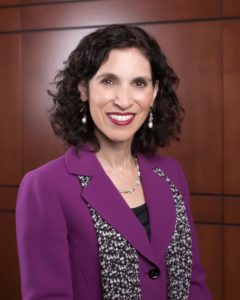 What initially prompted you to get involved with local government?
What initially prompted you to get involved with local government? Honestly, I cannot remember a time when I didn’t want to be involved with local government.
Honestly, I cannot remember a time when I didn’t want to be involved with local government. 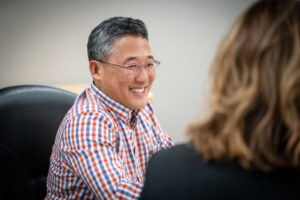 I graduated from the University of California, Davis, with a degree in Animal Physiology. I was accepted into a science Ph.D. program, but my heart was not in it. I took two years off to travel to Japan for 6 months and then work for an environmental consulting firm. It was there that I decided to pursue environmental law. I went to law school at the University of California, Berkeley, Boalt Hall, and graduated in 1994. My first job was at a 1,000-attorney international law firm in San Francisco. I then worked for a 100+ law firm in Los Angeles.
I graduated from the University of California, Davis, with a degree in Animal Physiology. I was accepted into a science Ph.D. program, but my heart was not in it. I took two years off to travel to Japan for 6 months and then work for an environmental consulting firm. It was there that I decided to pursue environmental law. I went to law school at the University of California, Berkeley, Boalt Hall, and graduated in 1994. My first job was at a 1,000-attorney international law firm in San Francisco. I then worked for a 100+ law firm in Los Angeles.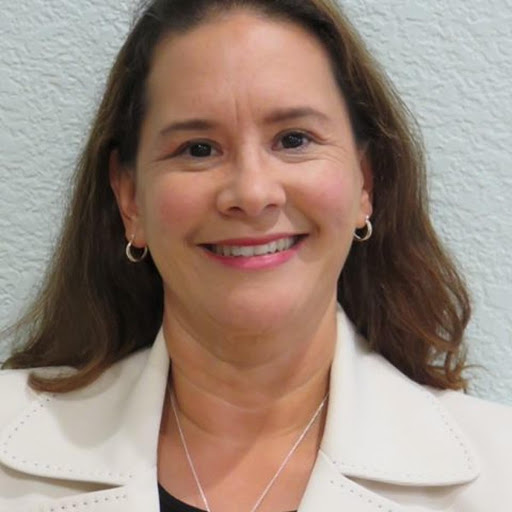 What initially prompted you to get involved with local government?
What initially prompted you to get involved with local government?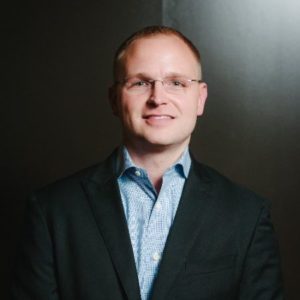
 Ashley Cascio has worked for more than 8 years with Climatec, a leading provider of turnkey implementation and funding solutions for public agencies looking to make buildings smarter, safer, and more efficient. We spoke with Ashley about her role as director of energy services as well as trends across the state related to energy and infrastructure.
Ashley Cascio has worked for more than 8 years with Climatec, a leading provider of turnkey implementation and funding solutions for public agencies looking to make buildings smarter, safer, and more efficient. We spoke with Ashley about her role as director of energy services as well as trends across the state related to energy and infrastructure.
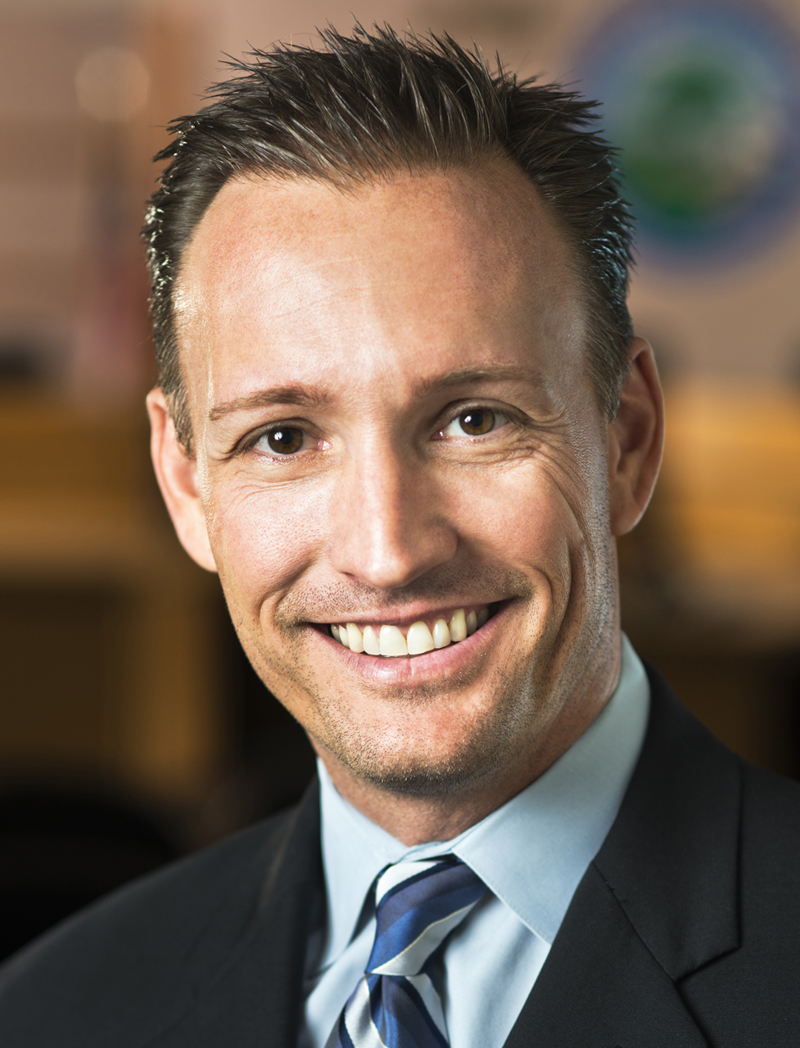 Why did you get involved in CCMF?
Why did you get involved in CCMF?